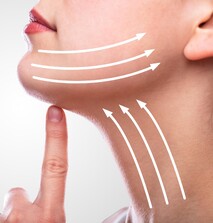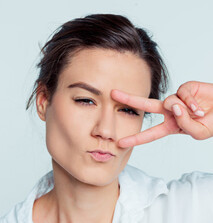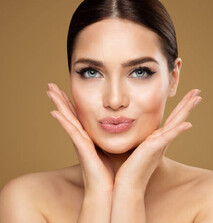Blepharoplasty
Your eyes are primal for the purpose of contact and communication. Bright, open eyes convey vitality, beauty, and youth. Conversely, sagging and puffiness caused by excess skin and fat can make you appear tired and older, despite feeling energetic and rested.
Eyelid surgery, known as blepharoplasty, can effectively address these concerns by removing excess skin and adjusting herniated orbital fat to create a more youthful appearance around the eyes.
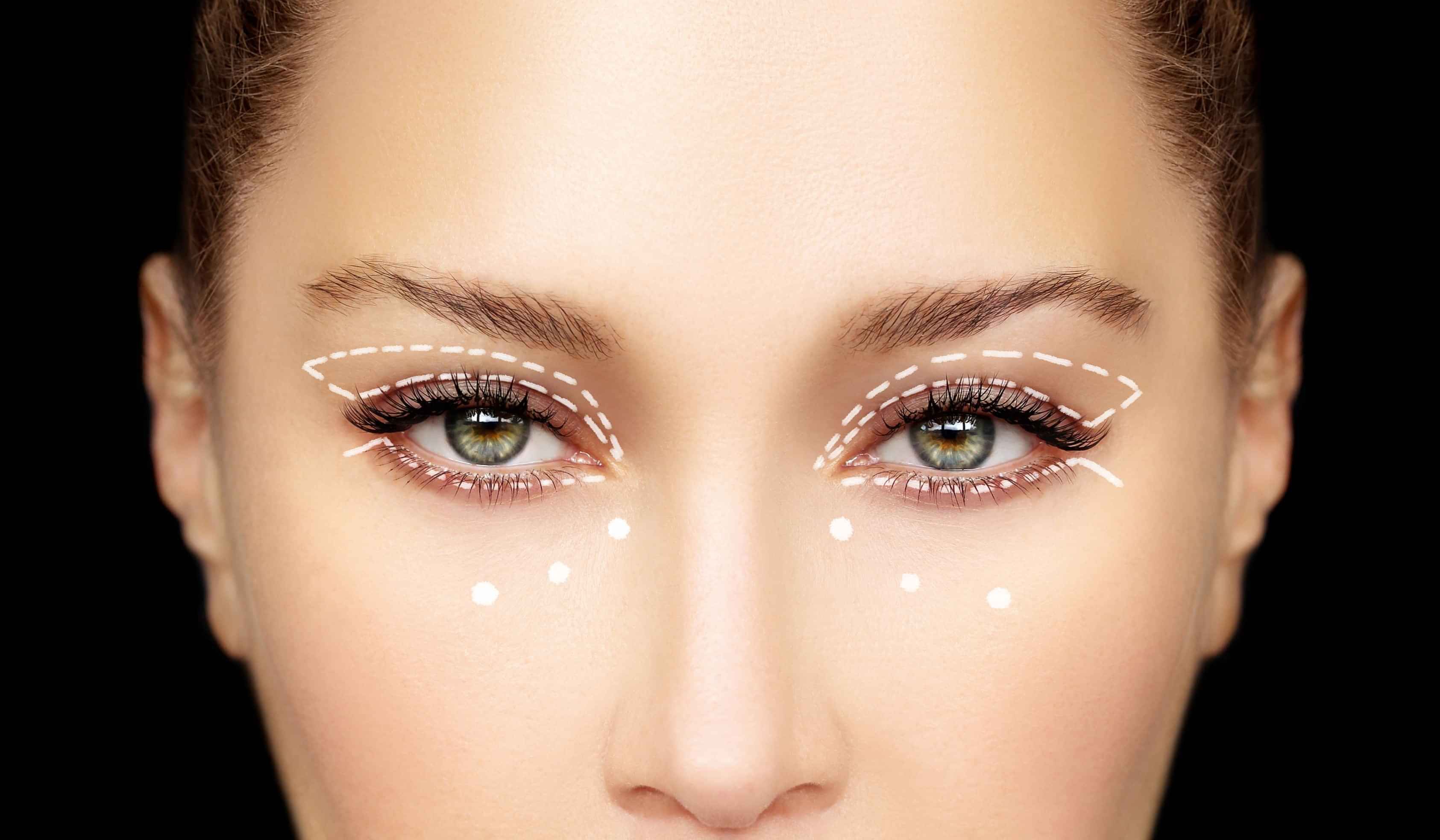
What it Does ...
Brow lift surgery does not remove the fine lines and wrinkles (crow’s feet) from the corners of your eyes. Although brow lift surgery may improve the appearance of the upper eyelids, people who have a large amount excess skin in the eyelids may want to consider upper eyelid blepharoplasty which can be done at the same time. For people who have bags under the eyes, a lower eyelid blepharoplasty is the right choice.
a) Upper Blepharoplasty
Upper Blepharoplasty is the removal of excess skin and occasionally fat in the upper lid. The incision is typically placed along the natural eyelid crease, allowing for removal of skin, muscle, and fat. Because of its placement, this incision is often barely noticeable post-surgery. In the less scarring trans-conjunctival approach, the incision is hidden inside the eyelid, making it invisible externally. While this approach allows for fat removal, excess skin can be addressed separately using a "pinch technique," or alternatively through procedures like laser resurfacing or chemical peels to tighten skin and reduce wrinkles simultaneously.
Upper blepharoplasty for Asian clients typically involves addressing specific aesthetic concerns like enhancing the appearance of the upper eyelids. This procedure aims to create a natural-looking eyelid crease (double eyelid) or to refine an existing crease for those who already have one. It can also involve reducing excess skin (hooding) that may obscure the eyelid platform. The goal is to achieve balanced, harmonious eyelids that complement the individual's facial features while respecting cultural preferences and anatomical variations.
b) Double Eyelid Surgery
Double eyelid surgery specifically aims to create a double eyelid (supratarsal crease) where it does not naturally exist or to enhance a less defined crease. Multiple creases on the upper lid may be converted to a single crease through this method. Either surgical (with incisions) or non-surgical methods (using sutures), depending on the patient's anatomy and desired outcome, may be used. The patient achieves a double eyelid appearance, enhancing the eyes' aesthetic by creating a visible upper eyelid crease. This is a popular procedure for people from Non-European ethnic backgrounds.
c) Suture Blepharoplasty
Suture Blepharoplasty is primarily used to create or enhance a double eyelid without making external incisions. Instead of removing tissue, sutures (stitches) are placed strategically to create a fold in the eyelid, defining the upper eyelid crease. This technique is less invasive and results in a natural-looking double eyelid appearance for individuals with a single eyelid (monolid).
d) Lower Blepharoplasty
Lower blepharoplasty or Eye bag surgery aims at reducing puffiness and “bags” under the eyes. In each eye socket, there is fat that serves to cushion the eyeball. As individuals age, this fat can protrude from the sockets (pseudo-herniation), resulting in the appearance of eye bags. The procedure aims at repositioning this fat to the tear trough region in order to create a smooth transition between the eyelid and cheeks. The trans-conjunctival approach (with fat re-positioning) is to camouflage the tear trough by filling it with fat. The external approach and cheek lift, aims to remove excess skin and return the sagging cheek tissue to its original position.
Lower blepharoplasty for Asian patients focuses on rejuvenating the lower eyelids by addressing issues like under-eye bags, puffiness, and the appearance of fatigue. The procedure aims to create a smoother, more refreshed appearance by removing excess fat and tightening loose skin. Special attention is given to preserving the unique anatomical features and ethnicity-specific characteristics of the eyes. The goal is to achieve natural-looking results that harmonize with the rest of the face, taking into account individual preferences and cultural considerations.
e) Sutures
Sutures is an alternative that may be used to lift and reposition the fat pads under the eyes without removing tissue; injectables like fillers or fat grafts can also be used to camouflage eye bags by adding volume to the surrounding areas.
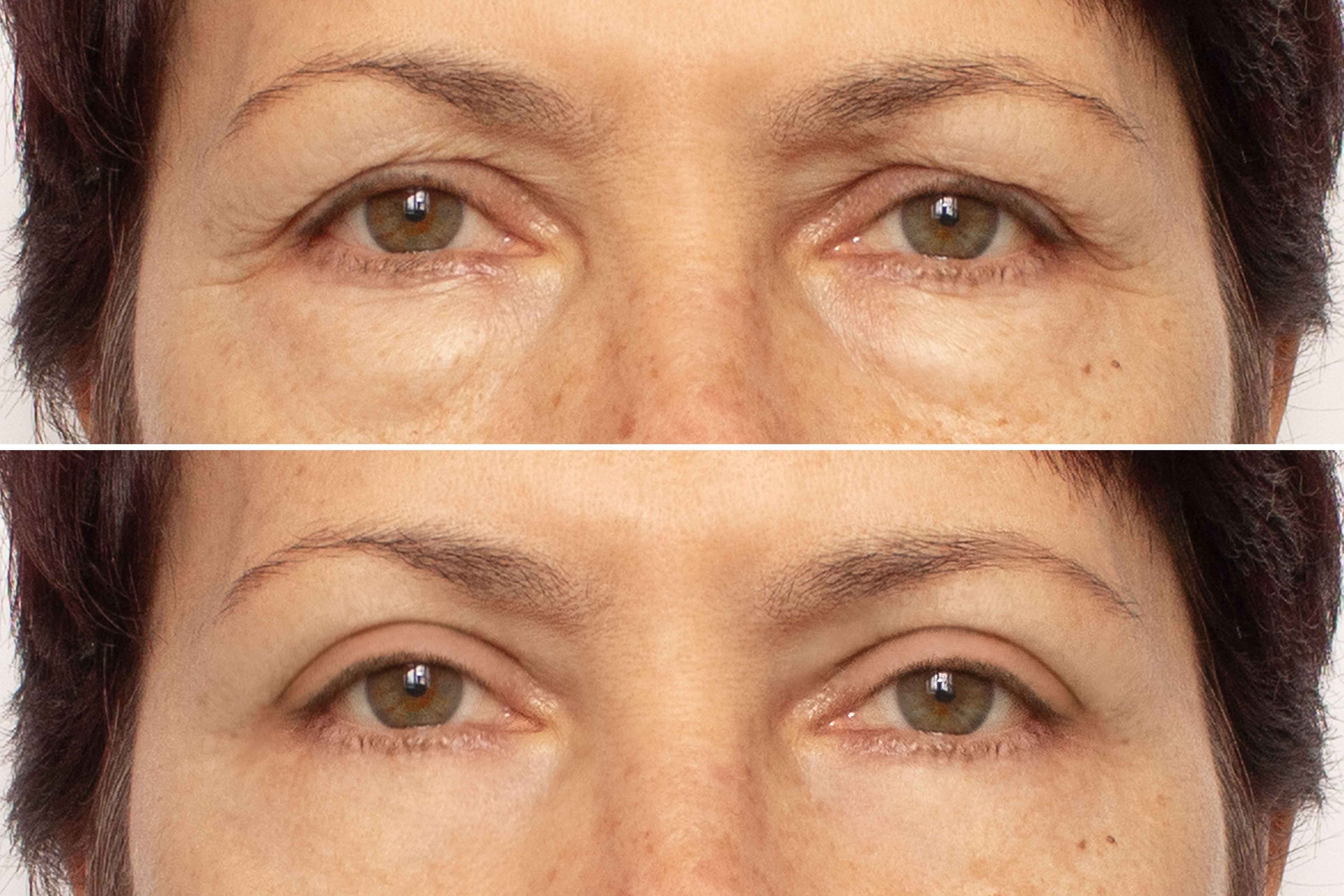
The Process
Your doctor will conduct a thorough evaluation of facial aesthetics and extensive discussion of any concerns or expectations during your initial visit. You may be advised against taking certain medications (e.g. anti-inflammatory drugs, herbal supplements etc.) or adjusting existing dosage, prior to the surgery. A set of instructions will also need to be followed closely.
Blepharoplasty surgery typically lasts 1–2 hours under local anaesthesia. It is usually a day procedure, so you will need someone to drive you home after the surgery. The natural healing process during the first one or two weeks may involve some swelling, bruising, dry eyes or eye irritation and irritation around the incision site. Sutures in an upper eyelid procedure are removed in five days; those in a lower eyelid procedure usually dissolve within a week. You can usually return to work in one week. Contacts can be worn after two to three weeks.
You may be able to see the results of your eyelid surgery within several weeks of the procedure. However, complete healing of the incision lines could take up to a year.
During your recovery:
Follow post-operative instructions
Avoid exposing your eyes to the sun
Using dark glasses and even a hat is recommended
Eligibility & Indications
Adults; generally in good health
Non-smokers
Keep realistic expectations about outcomes
No life-threatening conditions or serious eye conditions at time of surgery
Essential to have healthy facial tissue
People with some heaviness of lateral brows and eyelids
Drooping eyebrows or forehead creases
Sagging eyebrows
Frown lines; forehead wrinkles
Excess upper eyelid skin (hooding)
